Yoik about the Salmon
The Salmon, that strong and precious fish
swimming along the bottom.
It will follow the Tana River through the earth
if that is the course to follow.
Once again, it swims the long way to reach the source,
turns black and stops eating.
Once again, it turns back to where it came from,
to the great ocean
where salmon abound.
Once again, it glistens in the water
when it returns
to its own seas.
There it will find herring to feed on,
grow fat again,
and again look like its old self.
This yoik text is a re-creation of Luosa juoigan which is recorded in Otto Donner’s book Lappalasia lauluja that came out in Helsinki in 1876.
In a highly concentrated form, the yoik text is a telling testimony to the importance of the salmon in the Sami society of the Tana Valley, the core area of Sami river culture in Finnmark. Fishing Deatnu/the Tana River for salmon is vitally important to this culture both as a food resource and social arena as well as a bearer of culture. Today salmon fishing is a local industry in combination with some agriculture, wilderness management and other livelihoods.
Along the river, fishing for salmon and Sami culture have become so closely interwoven that it is embedded in a wide range of spiritual and material aspects of the culture. In various ways, the connection is revealed in Sami terms for salmon, sacred sites (sieidier) where sacrifices were made for good luck at fishing, and in legends and tales about the importance of salmon fishing along the river. There are also a great many place names and terms describing the river itself.
Tana or Deatnu, which means the great river, is the longest salmon rich watercourse in Norway and Europe. Deatnu/the Tana River is also considered one of the most important Atlantic salmon rivers in the world. With its enormous water carrying capacity, Deatnu has more in common with a wide flowing, continental watercourse than a regular river. Altogether, there is more than a 1000 km stretch of salmon bearing waters. Salmon also find their way up at least 35 tributaries of the river.
The most important fishing gear used today is the driftnet along with drop and barrier nets. These are used by local people who are “entitled to use nets,” that is, farmers who own land along the river. Besides using nets, both local people and tourists interested in fishing use rods for angling. The first anglers – belonging to the English upper classes – came to Deatnu as early as the middle of the 1800’s.
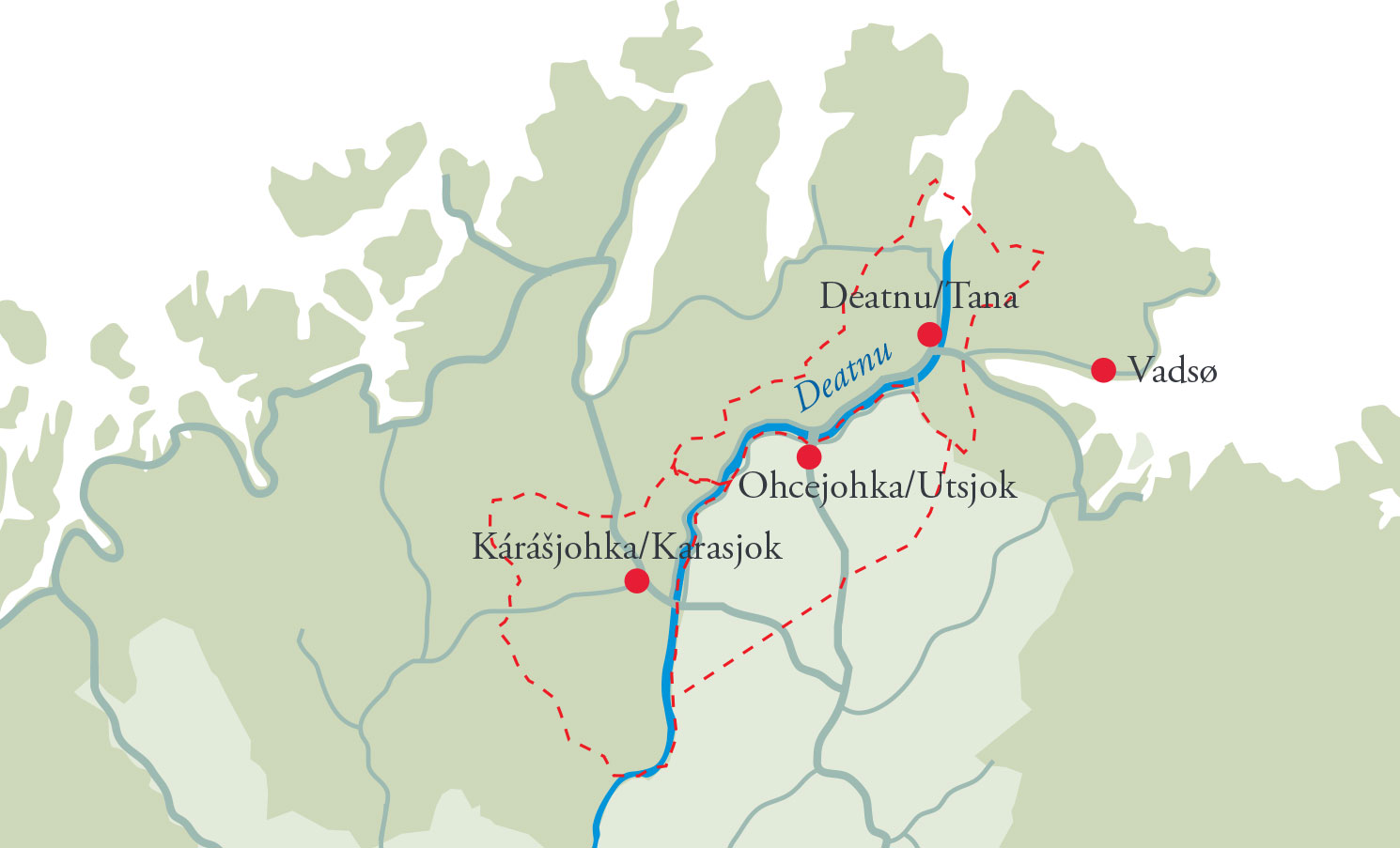 The Tana River is located in the core area of Samiland, flowing through three Sami counties: Deatnu/Tana and Kárášjohka on the Norwegian side and Ohcejohka/Utsjok in Finland. Map: Minna Saastamoinen.
The Tana River is located in the core area of Samiland, flowing through three Sami counties: Deatnu/Tana and Kárášjohka on the Norwegian side and Ohcejohka/Utsjok in Finland. Map: Minna Saastamoinen.
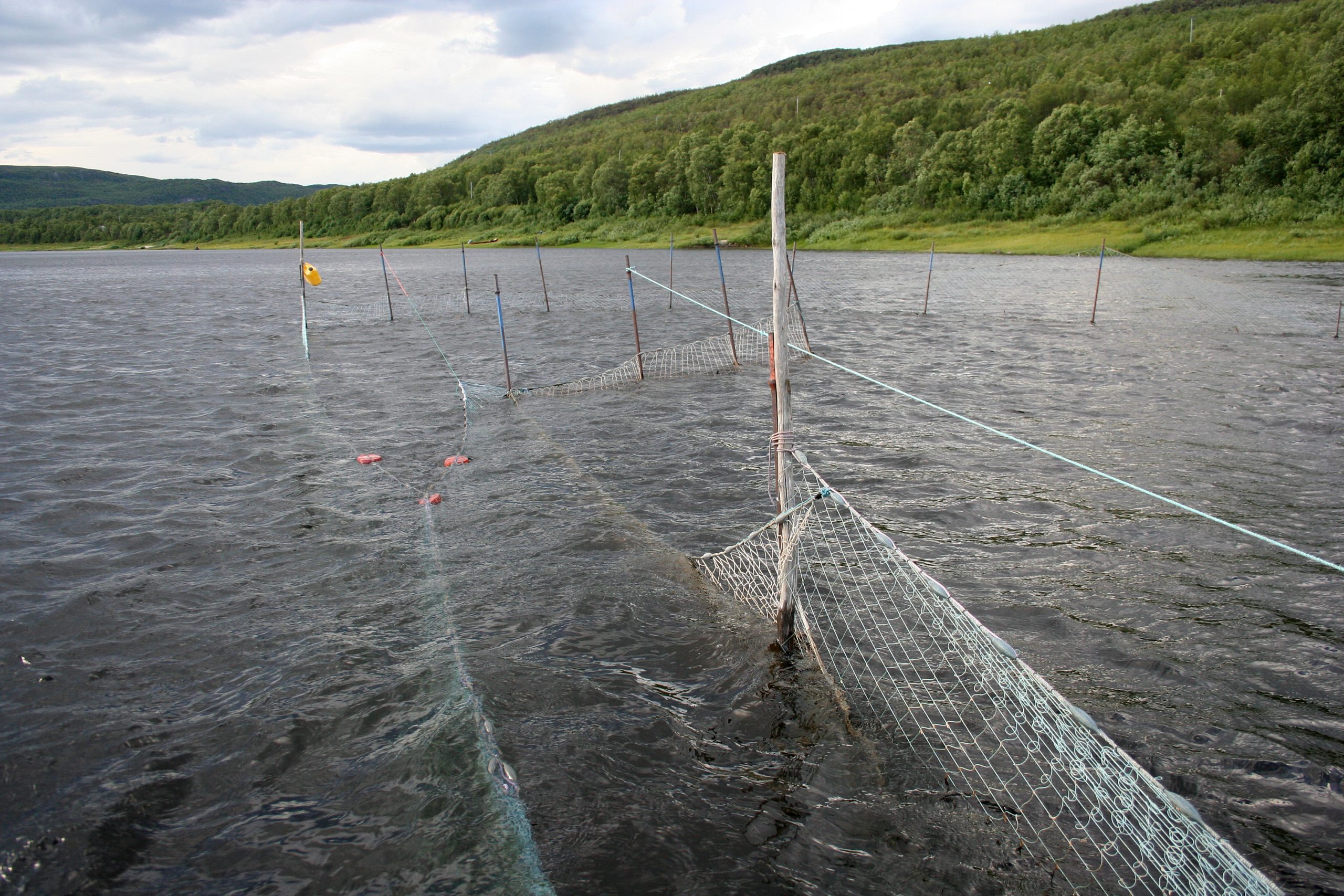 Barrier net, in Sami: buođđu, in Njallavárnjavvi. Photo: Mihkku Solbakk.
Barrier net, in Sami: buođđu, in Njallavárnjavvi. Photo: Mihkku Solbakk.
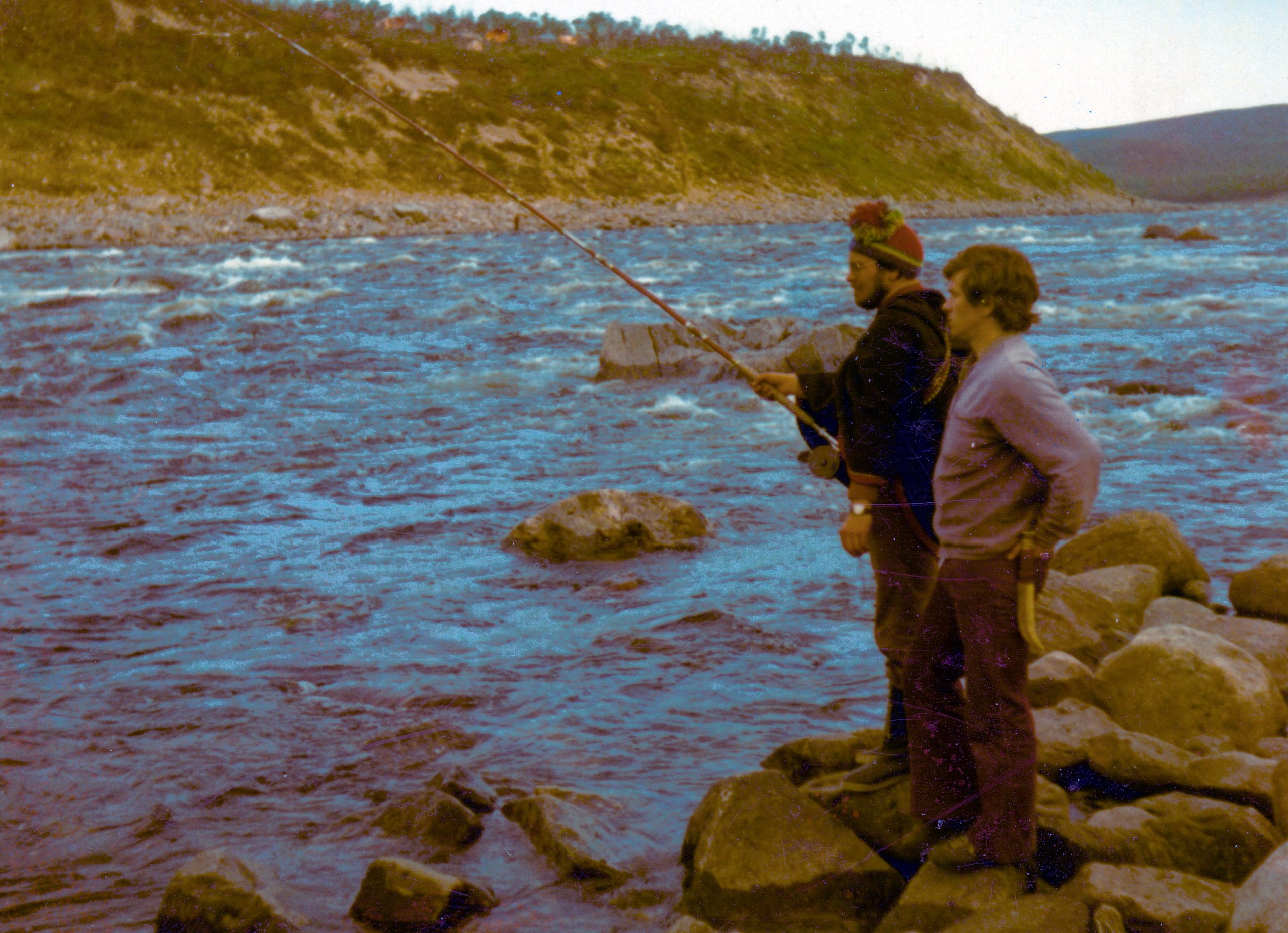 In Tana, angling – in Sami: oaggun – is important to local people who are not entitled to use nets.
In Tana, angling – in Sami: oaggun – is important to local people who are not entitled to use nets.
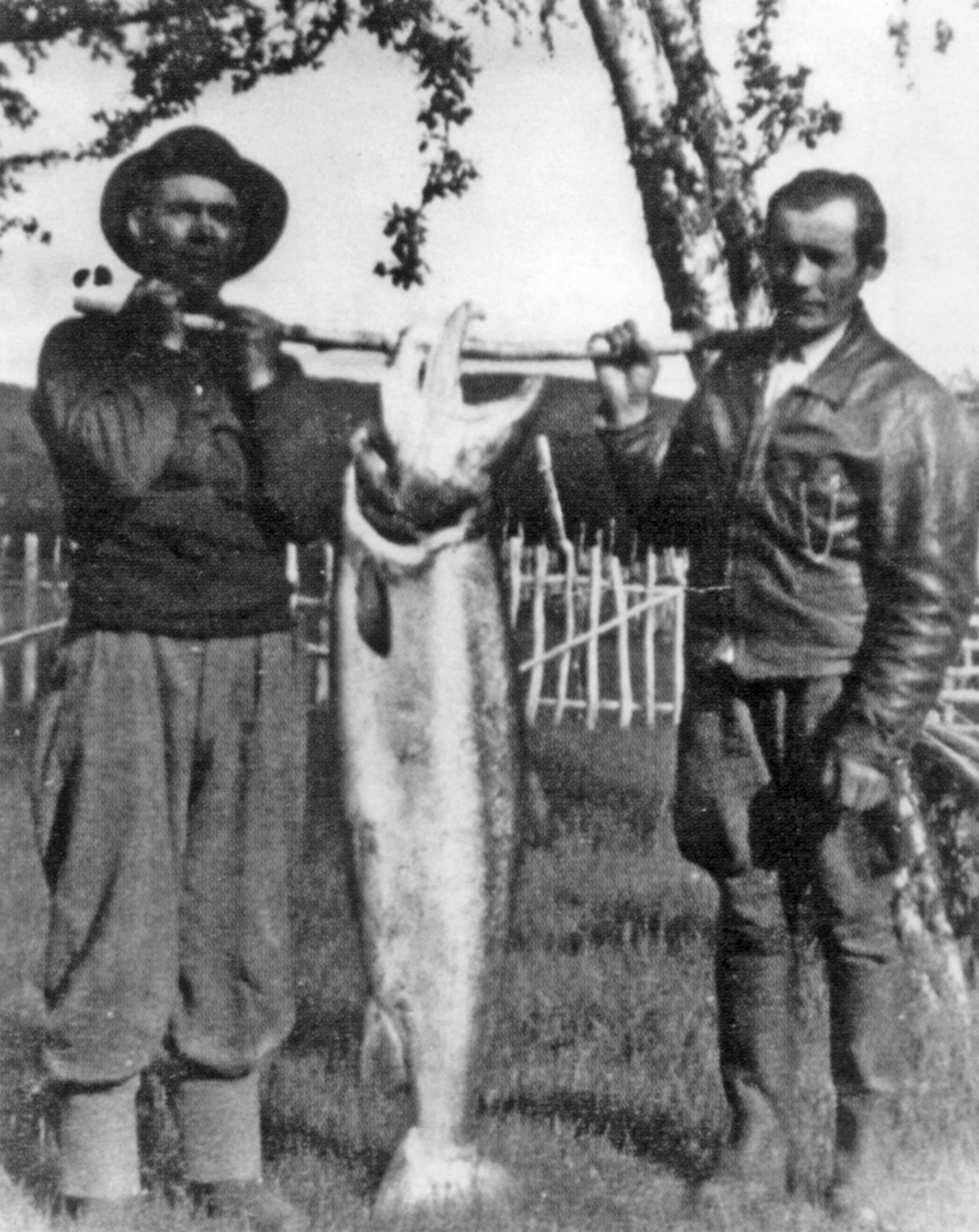 The official Norwegian record for the largest salmon ever caught is held by Nils Walle who caught a salmon weighing 32.5 kg (71.5 lbs.) at Geavŋŋis/Storfossen in Tana on July 7, 1951. Nils Walle is to the right in the picture with his big salmon. Photo on loan from Evald Valle.
The official Norwegian record for the largest salmon ever caught is held by Nils Walle who caught a salmon weighing 32.5 kg (71.5 lbs.) at Geavŋŋis/Storfossen in Tana on July 7, 1951. Nils Walle is to the right in the picture with his big salmon. Photo on loan from Evald Valle.
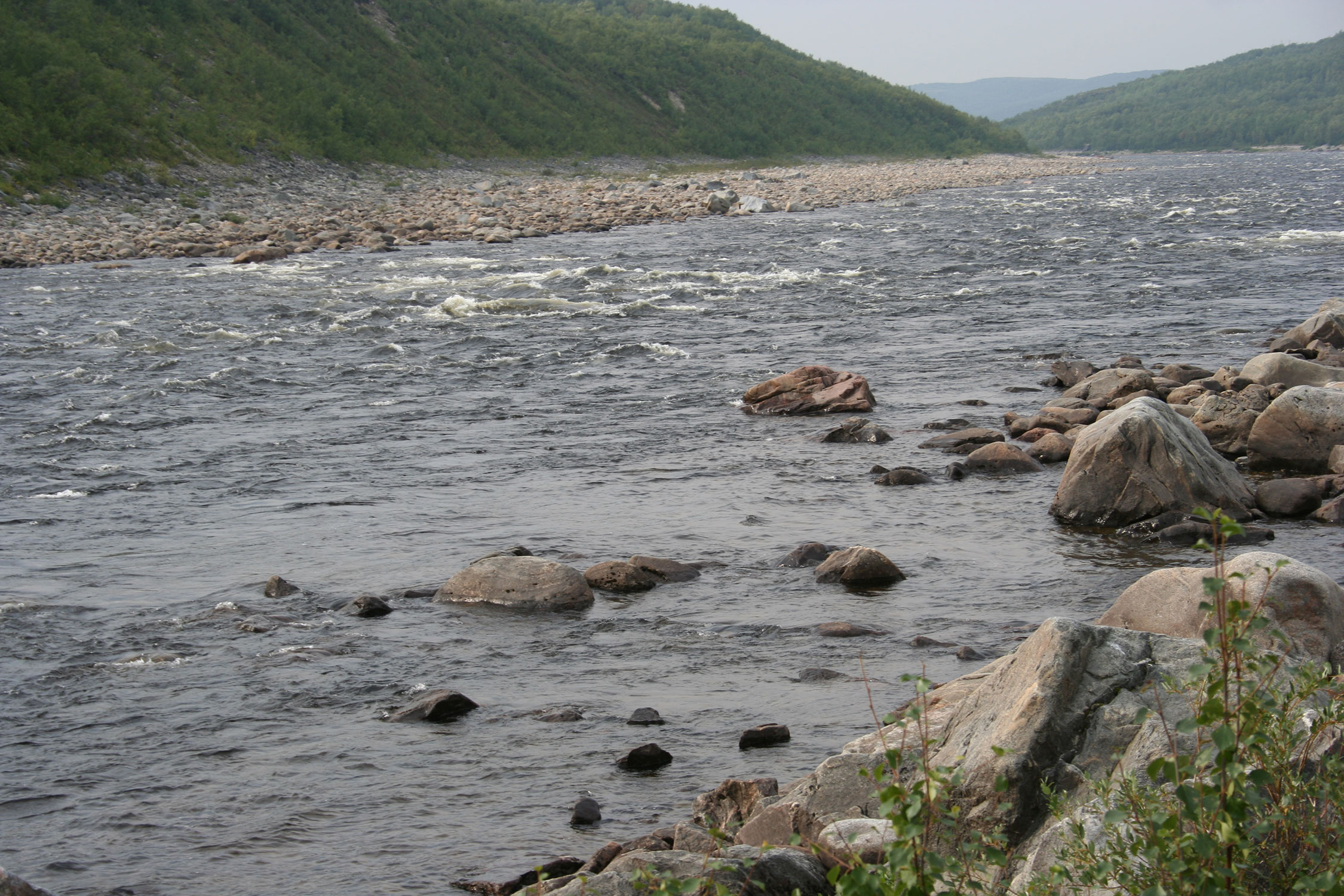 Geavŋŋis is the word for strong rapids also containing deep pools. The deep pools are all known by their Sami names. The picture shows the pool called Ruksesgeađni (“The Red Rock”). Photo: Mihkku Solbakk.
Geavŋŋis is the word for strong rapids also containing deep pools. The deep pools are all known by their Sami names. The picture shows the pool called Ruksesgeađni (“The Red Rock”). Photo: Mihkku Solbakk.
Aage Solbakk: “The Salmon Lords” take over Deatnu/the Tana river. English angling 1850-1900. ČálliidLágádus 2011.